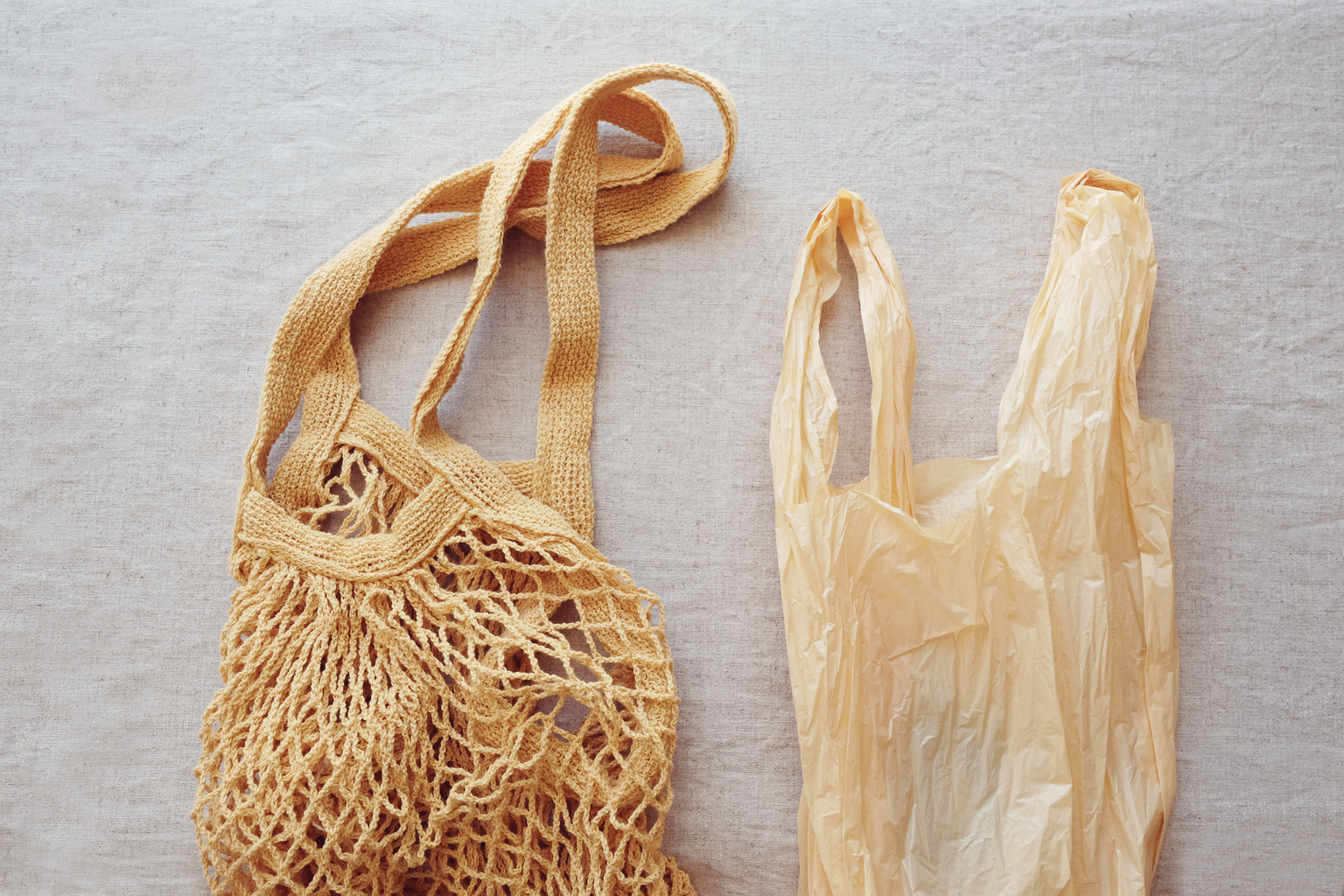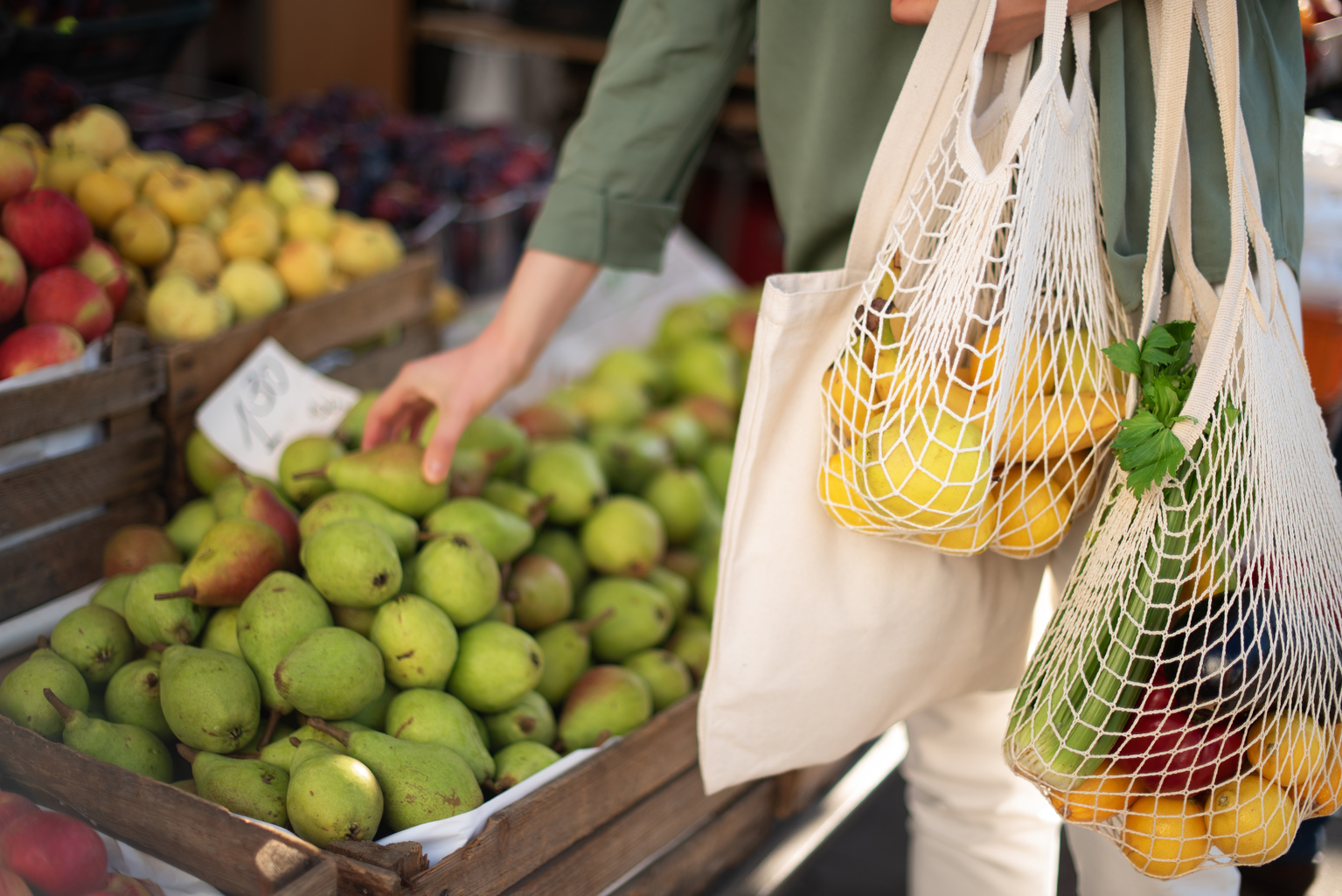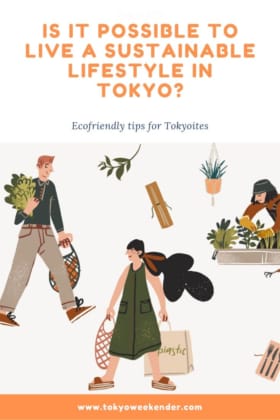My journey with sustainability started a few months after I moved to Japan. I chose to live in an inexpensive share house at the expense of a longer commute to work. One of the various rules my housemates and I have to respect is to separate our trash – and keep it in our respective rooms until collection day. If there’s one way to make you think more deeply about how much waste you’re accumulating, it’s keeping your trash within a few meters of your bed.
Though I tend to eat out most of the time, I still found myself with a build-up of plastic bags and random packaging. These ranged from remnants of midnight trips to Family Mart to flyers and rogue coupons collected during shopping sprees. As a result, I started to properly take notice of the overconsumption of single-use plastics in Japan. Lone bananas wrapped in a plastic shield, single ballpoint pens sold in plastic pouches, cookie boxes filled with individually wrapped treats. It’s funny the first couple of times you encounter these overprotected goods, but live in the country long enough and you’ll start to think it’s a little ridiculous.

Japan is the world’s second-biggest producer of plastic waste per capita after the United States. This might come as a surprise when you look at the uber-clean streets and train stations. But along the sidewalks and on the train platforms you’ll find just one of the obvious offenders: vending machines. Yes, they’re convenient, but they no doubt contribute to the over 700 plastic bottles bought every second in the country.
All things considered, I began to wonder what I could do to reduce my waste and carbon footprint. I started my transition to a more sustainable lifestyle with hours of research and Pinterest-ing. After drafting an extensive list of habits I needed to give up, and others I needed to pick up, I ran into one main hurdle: many of the recommended tips and tricks, like buying in bulk, are difficult, if not impossible, to take on board in Tokyo (where exactly would I store all that bulk in my share house, for one?).
Nevertheless, it seemed to me there were a few things I could do to at least avoid the biggest culprit: plastic. I had many unanswered questions so I reached out to Cecilia Grandi-Nagashiro, a sustainable consumption researcher and founder of Sustainable Living Tokyo, and initiative that is an initiative that aims at fostering the adoption of more earth-friendly lifestyles in Tokyo. That we should concentrate on reducing waste, she told me, is a common misconception. What we should be doing is reducing is our consumption. It’s great to switch to eco-friendly alternatives, but our impact is more significant when we simply stop buying.
Japan is the world’s second-biggest producer of plastic waste per capita after the United States
Sustainable living has become an industry of its own, with many bloggers promoting the practice and offering advice for the smoothest transition to a zero-waste lifestyle. The truth, of course, is that it’s hard to give up the things you are used to. It’s also a slow process. A truly sustainable lifestyle is something that’s out of reach for most of us city dwellers. It’s expensive and ironically requires the ordering and importing of eco-responsible items, thereby contributing to the emission of carbon dioxide. With the trend taking over social media platforms, there’s also a sort of elitism attached, with some accusing those who still rely on the occasional plastic bag of “not trying hard enough.” For something that’s meant to promote a safe and greener environment for all, it’s spawned a wealth of toxic conversations.
To successfully live a sustainable or low-waste lifestyle, you have to be in an enabling environment, and Japan simply isn’t that, admitted Grandi-Nagashiro. Plastic is virtually unavoidable. This doesn’t mean there aren’t things you can do to avoid it, but the reality is that it might catch up to you and you have to be at peace with that possibility.
The easiest and most impactful habit you can adopt is eliminating single-use plastic. Keep a tote or reusable bag with you and stock your small purchases there. Quit drinking from straws and carry a tumbler for your morning coffee. Avoid take-out dinners and opt for a sit-down restaurant instead. I have begun carrying a small set of utensils, including a fork, a spoon and a pair of chopsticks so that even if I am stuck eating convenience store food, I can politely refuse plastic forks or spoons. (I opted for an accessible and affordable utensil set, but I’ve got my eye on the bamboo set that’s been popping up on my Instagram feed lately). All that’s left to do is constantly refuse plastic bags and straws from the sales people in Tokyo konbinis and supermarkets – that’s a feat in itself.

When it comes to shopping, invest your money in clothing that will outlive trends. Sustainable fashion can be costly, so if purchasing from certified responsible brands doesn’t suit your budget, try buying from local brands or thrifting. But the most important thing is that you buy only when you need to, even if it’s from fast fashion stores.
At the grocery store, fill your kitchen cabinet as a Japanese person would. Avoid imported goods as much as possible. If you’re lucky enough to live near a good farmer’s market, build in some extra shopping time and support local farmers in exchange for delicious seasonal veggies. Generally, staying clear of a supermarket equals also staying clear of plastic wrapping. This is also a good way to avoid any of the store-standard plastic packagings as well as pesticides and GMOs. It’s good for the diet and better for your health. Bonus points!
The key to a truly sustainable lifestyle is, quite simply, upskilling. Grow your own garden of herbs (even if it’s just on your balcony) for cooking. Learn to repair or tailor clothes and maybe even some of your electronics. If you really love DIY, try your hand at making your own makeup, skincare and cleaning products. With shopping centers, malls and online retailers available for virtually everything we need, we often forget that we do have the option of hand-making items ourselves – or at least supporting those who do.
All of that said, don’t sacrifice your happiness. It’s commendable to attempt to reduce your waste to almost nothing, but this doesn’t mean you should avoid something if it truly brings you joy, to quote Marie Kondo. Don’t beat yourself up for buying a bag of Doritos. The ultimate advice is to be mindful of what you own and buy, think about where each item comes from and always be on the lookout for alternatives. Incorporate sustainable items as you use up your current inventory, one step at a time.
5 Ways to Change Your Lifestyle
- Ditch plastic bottles by switching to a reusable water bottle. For all your refilling needs, download the MyMizu app to find water fountains and businesses where you can stock up on H2O and keep on exploring.
- Say no to plastic bags and carry a small vinyl or tote bag with you. There are many on the market for tight or generous budgets, but if you can’t afford one right now, opt for re-using the plastic bags you already have.
- Invest in a portable utensil kit, very much like those your parents would pack for you to take to school. If you’re eating on the go, these will help reduce single-use forks, spoons and chopsticks.
- Avoid fast fashion and shop at local thrift stores. There are many of them across the city, but Shimokitazawa is great if you’re looking for more curated and good quality pieces.
- Get inspired! There are great communities in Tokyo that are doing everything they can to make your transition to a more sustainable lifestyle easy. Interested in joining the community, attend sustainable living workshops and events? Sustainable Living Tokyo is a great place to start to keep up with the movement. If you have questions or seek advice, Zero Waste Japan is another fantastic group with a passionate and supportive community.











